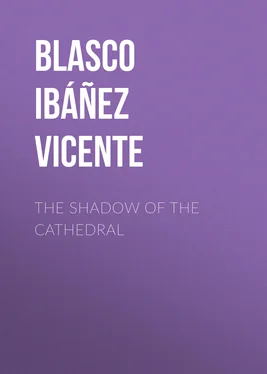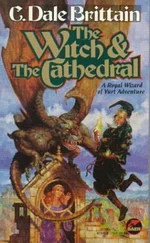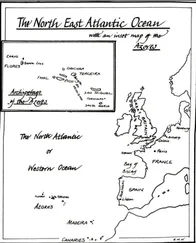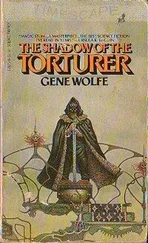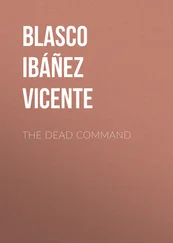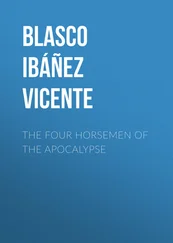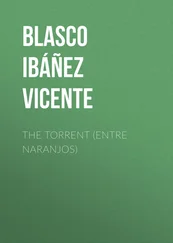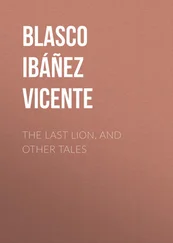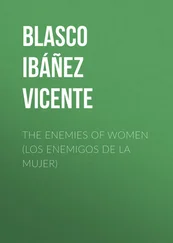Vicente Blasco Ibáñez - The Shadow of the Cathedral
Здесь есть возможность читать онлайн «Vicente Blasco Ibáñez - The Shadow of the Cathedral» — ознакомительный отрывок электронной книги совершенно бесплатно, а после прочтения отрывка купить полную версию. В некоторых случаях можно слушать аудио, скачать через торрент в формате fb2 и присутствует краткое содержание. Жанр: foreign_prose, foreign_antique, на английском языке. Описание произведения, (предисловие) а так же отзывы посетителей доступны на портале библиотеки ЛибКат.
- Название:The Shadow of the Cathedral
- Автор:
- Жанр:
- Год:неизвестен
- ISBN:нет данных
- Рейтинг книги:4 / 5. Голосов: 1
-
Избранное:Добавить в избранное
- Отзывы:
-
Ваша оценка:
- 80
- 1
- 2
- 3
- 4
- 5
The Shadow of the Cathedral: краткое содержание, описание и аннотация
Предлагаем к чтению аннотацию, описание, краткое содержание или предисловие (зависит от того, что написал сам автор книги «The Shadow of the Cathedral»). Если вы не нашли необходимую информацию о книге — напишите в комментариях, мы постараемся отыскать её.
The Shadow of the Cathedral — читать онлайн ознакомительный отрывок
Ниже представлен текст книги, разбитый по страницам. Система сохранения места последней прочитанной страницы, позволяет с удобством читать онлайн бесплатно книгу «The Shadow of the Cathedral», без необходимости каждый раз заново искать на чём Вы остановились. Поставьте закладку, и сможете в любой момент перейти на страницу, на которой закончили чтение.
Интервал:
Закладка:
The magnificent church was like a giantess whose feet were shod with rough shoes, but whose head was covered with the loveliest plumes. The bases of the pillars were rough and devoid of ornament, the shafts of the columns rose with severe simplicity, crowned by plain capitals at the base of the arches, on which the Gothic thistle had not yet attained the exuberant branching of a later florid period; but the vaulting which was finished perhaps two centuries after the first beginning, and the windows with their multi-coloured ogives, displayed the magnificence of an art at its culminating point.
At the two extreme ends of the transepts Gabriel found the proof of the immense progress made during the two centuries in which the Cathedral had been rising from the ground. The Puerta del Reloj 15 15 Reloj —Clock.
, called also de la Feria 16 16 Feria —Of the fair.
, with its rude sculptures of archaic rigidity, and the tympanum, covered with small scenes from the creation, was a great contrast to the doorway at the opposite end of the crossway, that of Los Leones 17 17 Los Leones —Lions.
, or by its other name, de la Alegria 18 18 Alegria —Joy.
, built nearly two hundred years afterwards, elegant and majestic as the entrance to a palace, showing already the fleshly audacities of the Renaissance, endeavouring to thrust themselves into the severity of Christian architecture, a siren fastened to the door by her curling tail serving as an example.
The Cathedral, built entirely of a milky white stone from the quarries close to Toledo, rose in one single elevation from the base of the pillars to the vaulting, with no triforium to cut its arcades and to weaken and load the naves with superimposed arches. Gabriel saw in this a petrified symbol of prayer, rising direct to Heaven, without assistance or support. The smooth, soft stone was used throughout the building, harder stone being used for the vaultings, and on the exterior the buttresses and pinnacles, as well as the flying buttresses like small bridges between them, were of the hardest granite, which from age had taken a golden colour, and which protected and supported the airy delicacy of the interior. The two sorts of stone made a great contrast in the appearance of the Cathedral, dark and reddish outside, white and delicate inside.
The seminarist found examples of every sort of architecture that had flourished in the Peninsula. The primitive Gothic was found in the earliest doorways, the florid in those del Perdon and de los Leones, and the Arab architecture showed its graceful horseshoe arches in the triforium running round the whole abside of the choir, which was the work of Cisneros, who, though he burnt the Moslem books, introduced their style of architecture into the heart of the Christian temple. The plateresque style showed its fanciful grace in the door of the cloister, and even the chirruguesque showed at its best in the famous lanthorn of Tome, which broke the vaulting behind the high altar in order to give light to the abside.
In the evenings of the vacation Gabriel would leave the seminary, and wander about the Cathedral till the hour at which its doors were closed. He delighted in walking through the naves and behind the high altar, the darkest and most silent spot in the whole church. Here slept a great part of the history of Spain. Behind the locked gates of the chapel of the kings, guarded by the stone heralds on pedestals, lay the kings of Castille in their tombs, their effigies crowned, in golden armour, praying, with their swords by their sides. He would stop before the chapel of Santiago, admiring through the railings of its three pointed arches the legendary saint, dressed as a pilgrim, holding his sword on high, and tramping on Mahomedans with his war-horse. Great shells and red shields with a silver moon adorned the white walls, rising up to the vaulting, and this chapel his father, the gardener, regarded as his own peculiar property. It was that of the Lunas, and though some people laughed at the relationship, there lay his illustrious progenitors, Don Alvaro and his wife, on their monumental tombs. That of Doña Juana Pimental had at its four corners the figures of four kneeling friars in yellow marble, who watched over the noble lady extended on the upper part of the monument. That of the unhappy constable of Castille was surrounded by four knights of Santiago, wrapped in the mantle of their Order, seeming to keep guard over their grand master, who lay buried without his head in the stone sarcophagus, bordered with Gothic mouldings. Gabriel remembered what he had heard his father relate about the recumbent statue of Don Alvaro. In former times the statue had been of bronze, and when mass was said in the chapel, at the elevation of the Host, the statue, by means of secret springs, would rise and remain kneeling till the end of the ceremony. Some said that the Catholic queen caused the disappearance of this theatrical statue, believing that it disturbed the prayers of the faithful; others said that some soldiers, enemies of the constable, on a day of disturbance, had broken in pieces the jointed statue. On the exterior of the church the chapel of the Lunas raised its battlemented towers, forming an isolated fortress inside the Cathedral.
In spite of his family considering this chapel as their own, the seminarist felt himself more attracted by that of Saint Ildefonso close by, which contained the tomb of the Cardinal Albornoz. Of all the great past in the Cathedral, that which excited his greatest admiration was the romantic figure of this warlike prelate; lover of letters, Spanish by birth, and Italian by his conquests. He slept in a splendid marble tomb, shining and polished by age, and of a soft fawn colour; the invisible hand of time had treated the face of the recumbent effigy rather roughly, flattening the nose, and giving the warlike cardinal an expression of almost Mongolian ferocity. Four lions guarded the remains of the prelate. Everything in him was extraordinary and adventurous even to his death. His body was brought back from Italy to Spain with prayers and hymns, carried on the shoulders of the entire population, who went out to meet it in order to gain the indulgences granted by the Pope. This return journey to his own country after his death lasted several months, as the good cardinal only went by short journeys from church to church, preceded by a picture of Christ, which now adorns his chapel, and spreading among the multitude the sweet scent of his embalming.
For Don Gil de Albornoz nothing seemed impossible; he was the sword of the Apostle returned to earth in order to enforce faith. Flying from Don Pedro the Cruel, he had taken refuge in Avignon, where lived exiles even more illustrious than himself. There were the Popes driven out of Rome by a people who, in their mediaeval nightmare, tried to restore at the bidding of Rienzi the ancient republic of the Consuls. Don Gil was not a man to live long in the pleasant little Provençal court; like a good archbishop of Toledo, he wore the coat-of-mail underneath his tunic, and as there were no Moors to fight he wished to strike at heretics instead. He went to Italy as the champion of the Church; all the adventurers of Europe and the bandits of the country formed his army. He killed and burnt in the country, entered and sacked the towns, all in the name of the Sovereign Pontiff, so that before long the exile of Avignon was again able to return and occupy his throne in Rome. The Spanish cardinal after all these campaigns, which gave half Italy to the Papacy, was as rich as any king, and he founded the celebrated Spanish college in Bologna. The Pope, well aware of his robberies and rapacity, asked him to give some sort of accounts. The proud Don Gil presented him with a cart laden with keys and bolts.
Читать дальшеИнтервал:
Закладка:
Похожие книги на «The Shadow of the Cathedral»
Представляем Вашему вниманию похожие книги на «The Shadow of the Cathedral» списком для выбора. Мы отобрали схожую по названию и смыслу литературу в надежде предоставить читателям больше вариантов отыскать новые, интересные, ещё непрочитанные произведения.
Обсуждение, отзывы о книге «The Shadow of the Cathedral» и просто собственные мнения читателей. Оставьте ваши комментарии, напишите, что Вы думаете о произведении, его смысле или главных героях. Укажите что конкретно понравилось, а что нет, и почему Вы так считаете.
